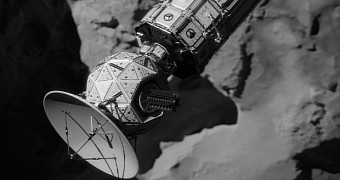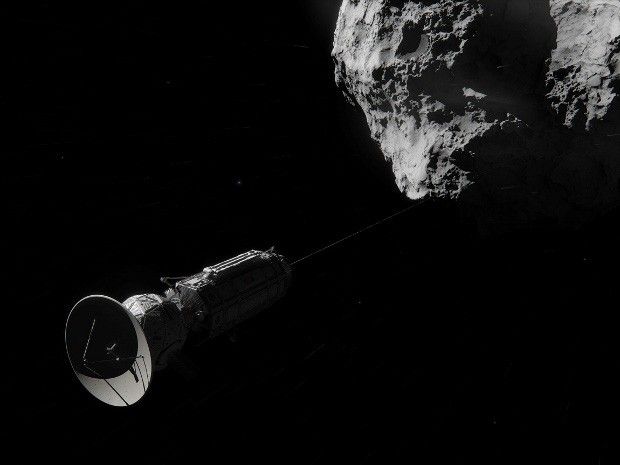NASA is considering building yet another space probe, this time one designed to explore our Solar System by hitching rides on comets and asteroids.
The concept probe, dubbed the Comet Hitchhiker, was described by researcher Masahiro Ono with the Jet Propulsion Laboratory at the American Institute of Aeronautics and Astronautics SPACE conference this September 1.
Since the project is still in its early stages - to be perfectly honest, it's more a proposal than a proper project for the time being - there is no news on when construction work might begin, let alone a possible launch date.
All the same, principal investigator Masahiro Ono, who came up with the idea, has a pretty good idea of how the robotic Comet Hitchhiker would work.
Here's a run-through
As mentioned, this robotic space explorer that NASA is thinking about building and then setting loose in our Solar System would hitch rides on comets and asteroids.
Its primary targets would be orbs in the asteroid belt, a region of the Solar System that is located between the orbits of Mars and Jupiter and that is populated by an army of irregularly shaped bodies, and in the Kuiper Belt, a similar region extending beyond the planets.
“This kind of hitchhiking could be used for multiple targets in the main asteroid belt or the Kuiper Belt, even 5 to 10 in a single mission,” explains Masahiro Ono.
Since comets and asteroids have a low gravitational pull and travel at impressive speeds, the proposed Comet Hitchhiker would rely on a tether fitted with a harpoon on one end to attach itself to its targets from afar. Then, it would simply reel itself closer and closer.
Masahiro Ono says the technique would be quite similar to fishing, the fish being the target comet or asteroid, and the fisherman the robotic probe trying to get close to it.
“Imagine you're on a boat on a lake with a fishing pole, and want to catch a big fish. Once the fish bites, you would release more of the line with a moderate tension, rather than holding it tightly. With a long enough line, the boat will eventually catch up with the fish.”
Then, to break free from one target and move on to another, the Comet Hitchhiker would simple detach the tether, retrieve it for another use and get on with its journey.
Math says it could be done
So far, principal investigator Masahiro Ono and fellow researchers have carried out simulations to assess whether creating a tether and a harpoon strong enough to withstand impacts with comets or asteroids is feasible. They say that, according to their calculations, it can be done.
Thus, their investigations until now have revealed that, for the proposed Comet Hitchhiker to be able to attach itself to orbs and then reel itself close to them, it would require a tether about 62 to 620 miles (100 to 1,000 kilometers) made of Zylon or Kevlar, both strong fibers.
These materials would perform well supposing that, to enter its target's orbit and land on it, the robotic probe would have to slow at a rate of about 0.9 miles (1.5 kilometers) per second.
For a velocity change of 6.2 miles (10 kilometers) per second, more advanced technologies like a carbon nanotube tether and a diamond harpoon would be the best choice.
“Comet Hitchhiker requires a tether made from a material that can withstand the enormous tension and heat generated by a rapid decrease in speed for getting into orbit and landing,” the scientists explain.
It might sound very complicated, but the research team says such a system is actually preferable to using actual propellant to guide the robotic probe towards its targets. This is because, with proper fuel, there is always the risk of running out.
The reusable tether and harpoon system they have in mind, on the other hand, would allow the Comet Hitchhiker to complete longer missions without propellant availability being an issue.

 14 DAY TRIAL //
14 DAY TRIAL // 

